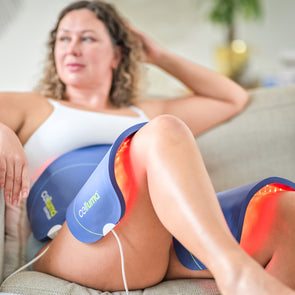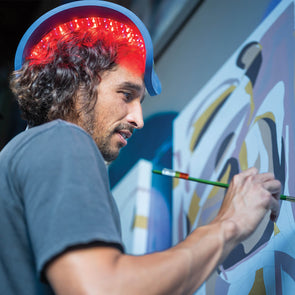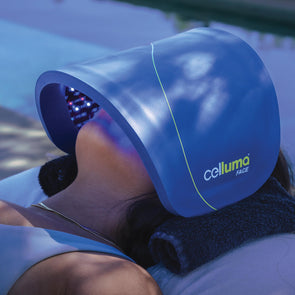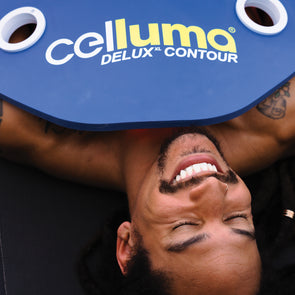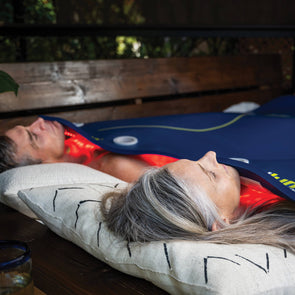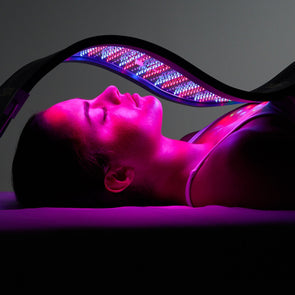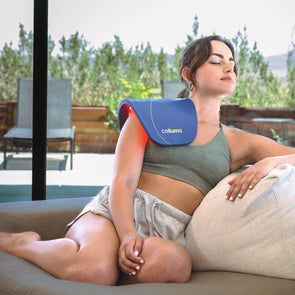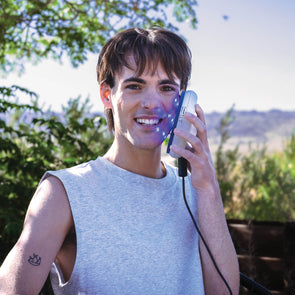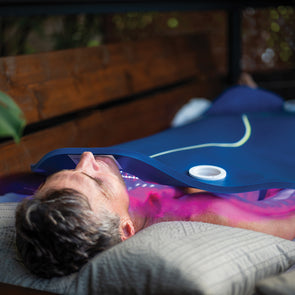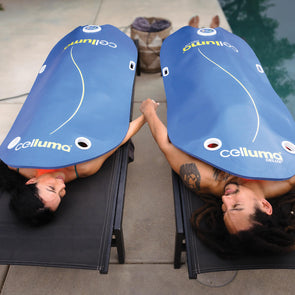NASA and Red Light Therapy
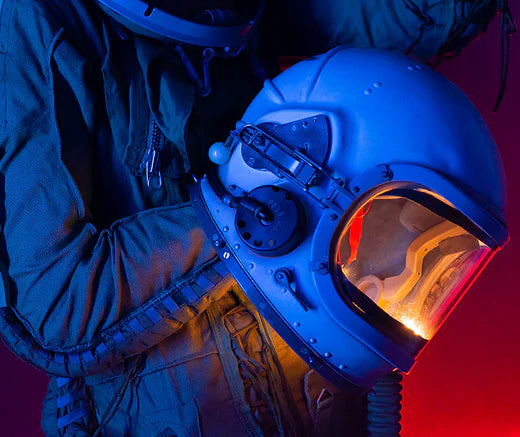
NASA and Red Light Therapy
Red and near infrared light therapy has become much more common place as devices and treatment options have evolved.
Based on research conducted by NASA for astronauts who could become injured or ill on long-term space missions, light emitting diode (or LED) therapy is used today as a safe and natural method of treatment for a variety of skin and pain conditions including acne, wrinkles, aging skin, chronic pain, wound healing and even hair restoration.
Did NASA Really Discover Red Light Therapy?
While NASA did not discover red light therapy per se, they played a significant role in the development and research of light therapy technologies, including red light therapy. In the 1980s, NASA scientists conducted experiments to investigate the effects of light on plant growth in space. They found that specific wavelengths of light, including red light, were particularly effective in promoting plant growth and photosynthesis. This research led to the development of light emitting diodes (LEDs) that emitted specific wavelengths of light for various applications.
As early as December 2000, NASA issued a press release discussing the “healing power of light.” The release went on to state, “Using powerful light-emitting diodes, or LEDs, originally designed for commercial plant growth research in space, scientists have found a way to help patients here on Earth.”
Subsequently, scientists and medical professionals began exploring the potential benefits of these LED technologies for human health. Red light therapy, utilizing the therapeutic properties of red-light wavelengths, emerged as a promising approach for promoting healing, reducing inflammation, and managing various conditions. While NASA’s research paved the way for the development and understanding of light therapy, it’s important to note that red light therapy itself is a result of ongoing scientific research and clinical studies conducted by various institutions and professionals in the field.
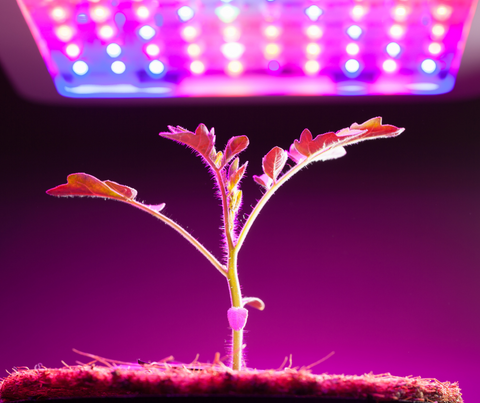
Giving Cells the Energy They Need
Much like photosynthesis in plants, red and infrared (IR) therapy -- or “low-level light” therapy -- uses specific, proven wavelengths to stimulate a natural response in human tissue that can increase circulation, accelerate tissue repair, ease muscle pain, relieve joint stiffness, and enhance overall cell performance on a microscopic level. Infrared (IR) light therapy works by boosting cellular energy to encourage and enhance the body’s natural healing abilities.
Additional research over the years only continues to point to the effectiveness of light therapy. Research indicates that cells absorb particles of light (photons) and transform their energy into adenosine triphosphate (ATP), the form of energy that cells utilize. The resulting elevation of ATP is then used to power metabolic processes; synthesize DNA, RNA, proteins, enzymes, and other products needed to repair or regenerate cell components; foster mitosis or cell proliferation; and restore homeostasis. Simply put, the LED phototherapy source provides compromised cells with added energy, so the cells performance is enhanced. For example, fibroblast cells will increase collagen and elastin production in connective tissue to improve the appearance of fine lines and wrinkles in our skin and increase the rate of wound healing.
Think of it like charging a cell phone. The charger increases the battery power of your cell phone from low power back to fully charged and functioning optimally. In much the same way red light therapy increases the energy in your cells to promote healing of the muscle or injured tissue and bring it back to optimal performance.
Wound Healing Treatment Option
Red light therapy has been shown to accelerate tissue repair, decrease wound size and accelerate wound closure, as well as reduce the pain associated with the healing process. Low level-light therapy has been shown to decrease a patient’s recovery time while reducing discomfort levels and enhancing overall outcomes.
Red Light Therapy for Pain
Poor circulation and the lack of oxygen and other essential molecules (i.e., glucose, Adenosine Triphosphate (ATP)) in blood vessels can cause pain or a lack of sensation. For effective treatment of pain conditions with LED red and infrared light therapy, wavelength is key. Compared to blue light therapy, near-infrared wavelengths can penetrate deep into the muscle and joint tissue to alleviate pain, increase circulation, and decrease inflammation.
Infrared light therapy provides compromised cells with extra energy to accelerate the natural repair of compromised tissue cells, foster cell production, and restore homeostasis within the body. Light energy stimulates the release of nitric oxide, causing blood vessels to increase in diameter (vasodilation) and allowing more blood flow, oxygen, and other important factors to be delivered to the cells. This increase in oxygen and nutrients, along with stimulation of the light energy emitted increases ATP production, which activates pain relieving pathways providing pain relief. This decreases pain and inflammation and increases tissue regeneration in the localized area.

More Collagen Means Better Skin
When it comes to aging, a significant factor that leads to wrinkles, fine lines, and joint pain is due to inadequate collagen levels. Collagen is the main structural protein found in your skin and other connective tissue. Collagen literally holds our bodies together.
Increased fibroblast proliferation is just one benefit of LED red light therapy. Fibroblasts make collagen fibers, so it stands to reason that the more, and healthier, fibroblasts we have in the skin, the more and better collagen fibers are made. And as we all know, collagen synthesis and maintenance are the bedrock of anti-aging. Collagen is a key to longevity.
Healthy collagen levels are what give us a glowing complexion, firm skin, strong nails, dense bones, and healthy hair. It is also essential in keeping muscles, joints, and tendons in a healthy working order. Simply put, the more our bodies produce collagen, the better we’ll look and feel as we age and attempt to delay tissue and cell degeneration.
Benefits of Celluma LED Red Light Therapy
Celluma LED red light therapy devices have been cleared by the FDA for pain management, skin conditions and hair restoration. Celluma LED red light therapy devices use specific wavelengths of light energy to improve cellular health by accelerating the repair and replenishment of compromised tissue cells for enhanced results.
While similar red light therapy devices on the market claim to accomplish the same thing, they often require multiple machines and accessories to treat specific conditions or accommodate different parts of the body. From compact handhelds to large full-body red light therapy devices, the Celluma SERIES offers convenient and affordable solutions for treating skin concerns as well as muscle, joint and pain issues in a variety of versatile systems.
Learn More about all 14 models in the Celluma SERIES of red light therapy devices.



